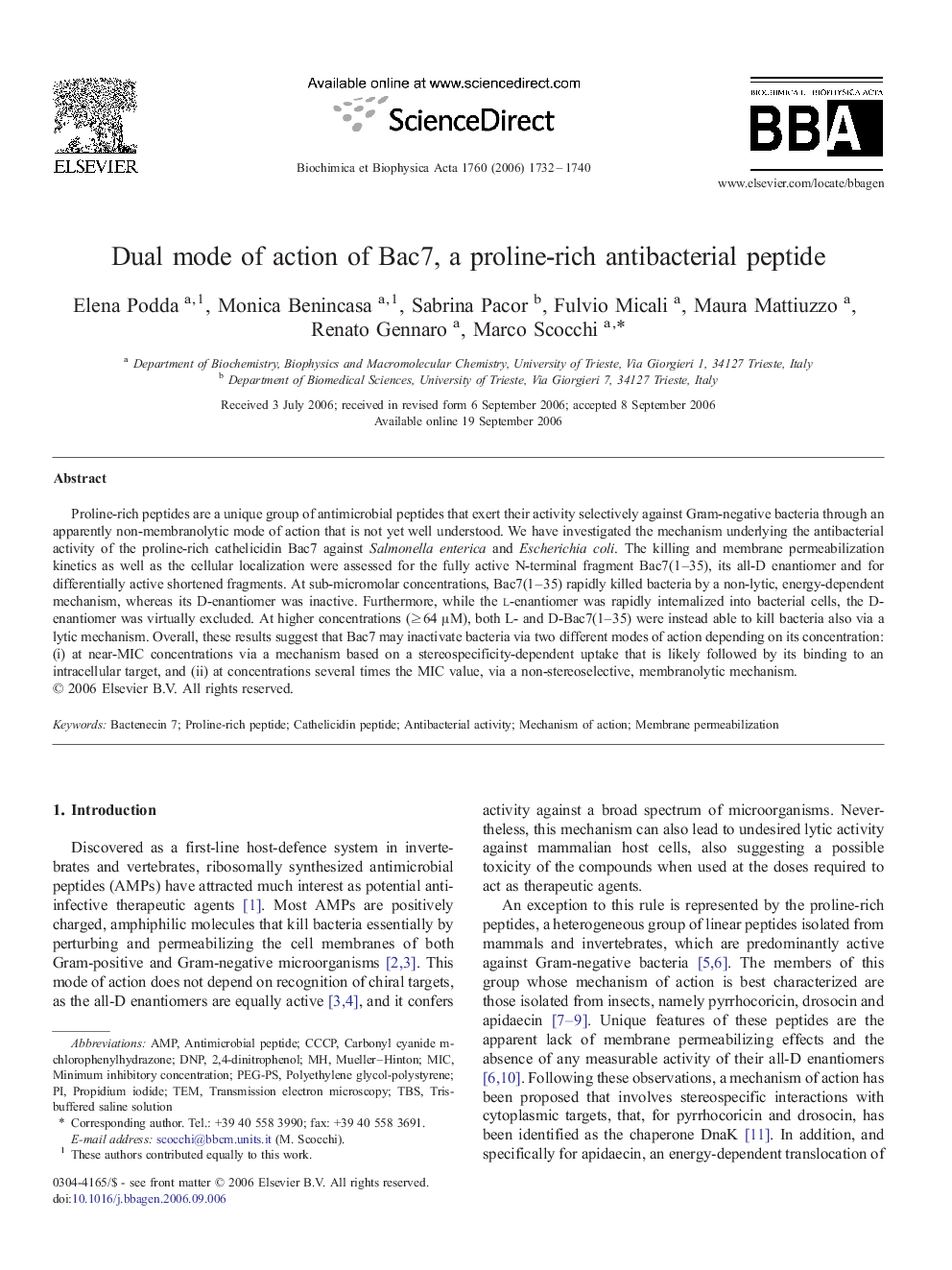| Article ID | Journal | Published Year | Pages | File Type |
|---|---|---|---|---|
| 1948714 | Biochimica et Biophysica Acta (BBA) - General Subjects | 2006 | 9 Pages |
Proline-rich peptides are a unique group of antimicrobial peptides that exert their activity selectively against Gram-negative bacteria through an apparently non-membranolytic mode of action that is not yet well understood. We have investigated the mechanism underlying the antibacterial activity of the proline-rich cathelicidin Bac7 against Salmonella enterica and Escherichia coli. The killing and membrane permeabilization kinetics as well as the cellular localization were assessed for the fully active N-terminal fragment Bac7(1–35), its all-D enantiomer and for differentially active shortened fragments. At sub-micromolar concentrations, Bac7(1–35) rapidly killed bacteria by a non-lytic, energy-dependent mechanism, whereas its D-enantiomer was inactive. Furthermore, while the L-enantiomer was rapidly internalized into bacterial cells, the D-enantiomer was virtually excluded. At higher concentrations (≥ 64 μM), both L- and D-Bac7(1–35) were instead able to kill bacteria also via a lytic mechanism. Overall, these results suggest that Bac7 may inactivate bacteria via two different modes of action depending on its concentration: (i) at near-MIC concentrations via a mechanism based on a stereospecificity-dependent uptake that is likely followed by its binding to an intracellular target, and (ii) at concentrations several times the MIC value, via a non-stereoselective, membranolytic mechanism.
